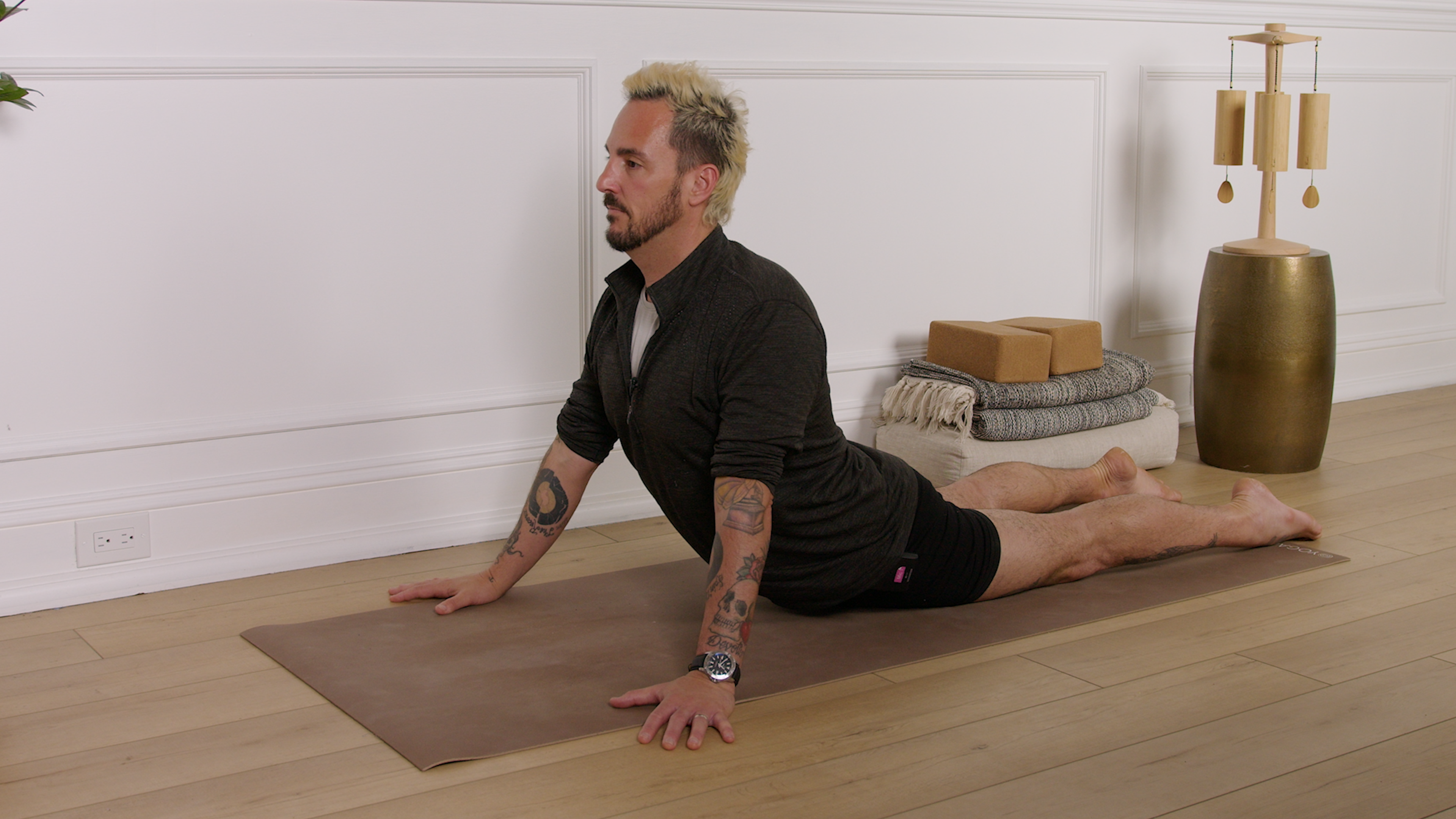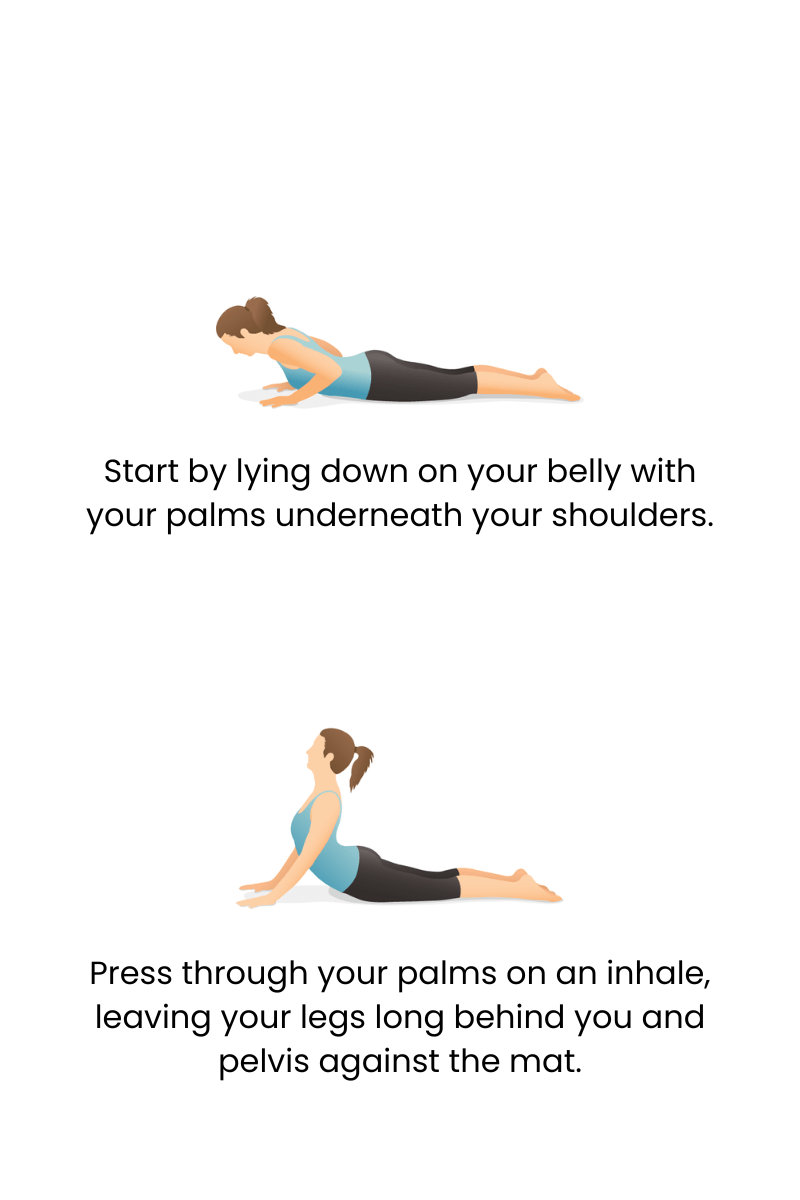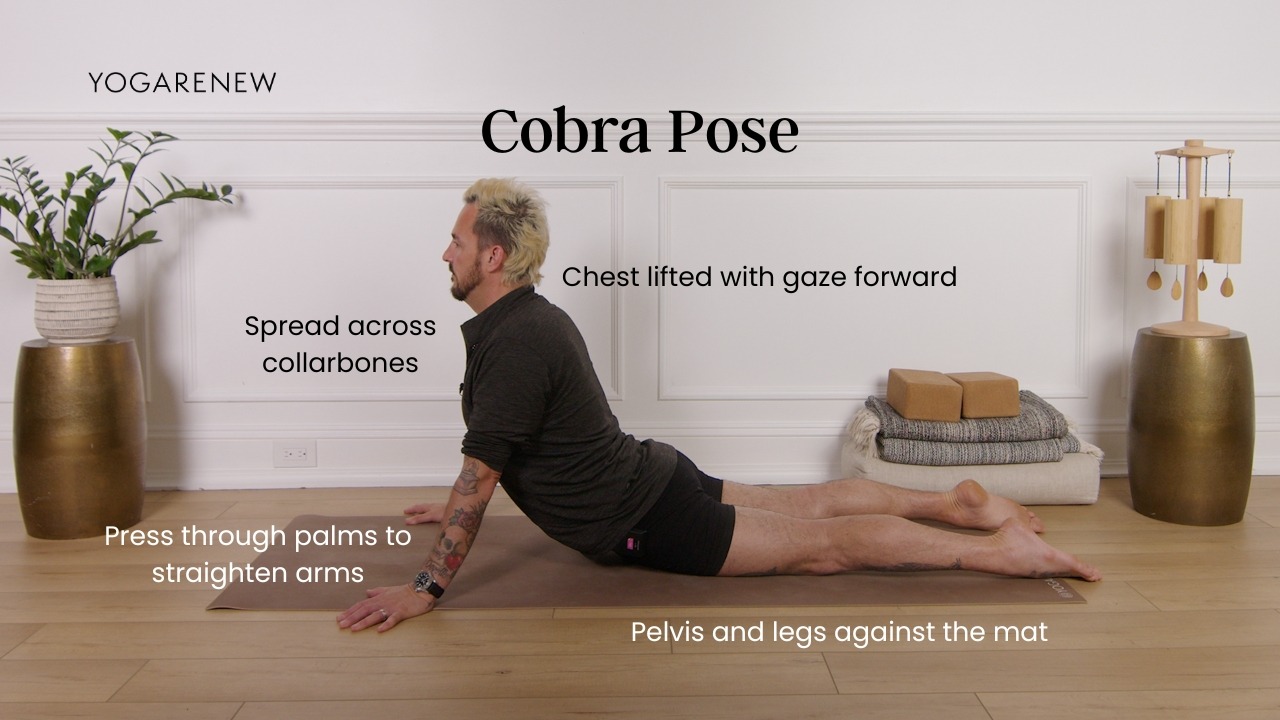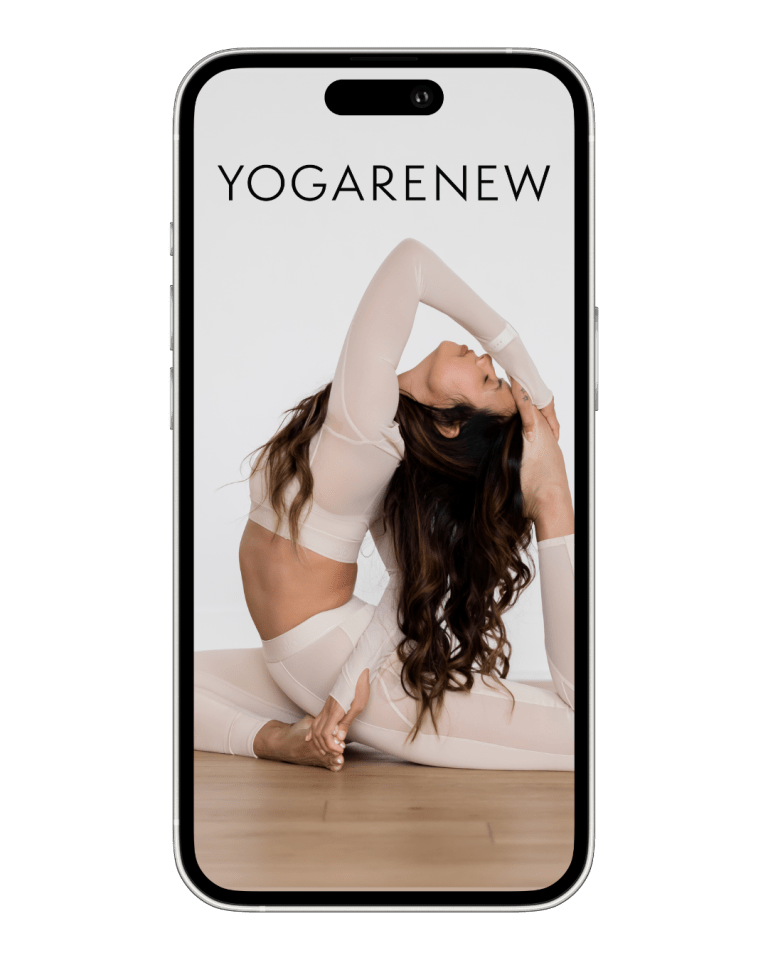What is Cobra Pose?
English Name: Cobra Pose
Sanskrit Name: Bhujangasana (pronounced boo-jang-GAHS-uh-nuh)
Category: Backbend, Prone Pose, Beginner-Friendly, Energizing

English Name: Cobra Pose
Sanskrit Name: Bhujangasana (pronounced boo-jang-GAHS-uh-nuh)
Category: Backbend, Prone Pose, Beginner-Friendly, Energizing
Cobra Pose, or Bhujangasana, is a foundational yoga backbend practiced lying face-down and lifting the chest. It’s commonly used in warm-ups, Sun Salutations, and therapeutic sequences to increase spinal flexibility, open the heart, and strengthen the back body. Gentle yet powerful, Cobra Pose teaches practitioners how to activate the spine and core while staying grounded and relaxed.
In Cobra Pose, the front body stretches while the back body strengthens. It encourages a deep breath, expands the chest, and helps counteract the effects of slouching or prolonged sitting. Whether practiced on its own or as part of a sequence, Bhujangasana is a gateway to deeper backbends and improved posture.


1. Back or Neck Injury: Avoid deep backbends without medical clearance
2. Recent Abdominal Surgery: Pressure on the abdomen may cause strain
3. Pregnancy: Lying face-down is not recommended during any trimester
4. Carpal Tunnel Syndrome: Weight-bearing in the wrists may cause discomfort
5. Herniated Discs or Sciatica: Modify or consult a healthcare provider before practicing
Cobra Pose is a fundamental posture that strengthens the back, improves posture, and opens the chest. It helps relieve tension from hours of sitting or working at a desk and brings fresh energy to the spine and heart space. With regular practice, Bhujangasana can support spinal health, deepen your breath, and elevate your mood. Its simplicity makes it a staple for both beginners and experienced yogis.
Yes—especially Low Cobra. Start small and use breath to guide the lift.
In many cases, yes—it strengthens spinal muscles and improves posture. But it should be done gently and pain-free.
Cobra keeps the thighs on the floor and uses more spinal muscle engagement; Upward Dog lifts the thighs and requires more strength and flexibility.

Explore classes & pose tutorials for any style, format, duration or experience level with a free account in the YogaRenew app. Or subscribe and gain access to workshops, live classes and more.